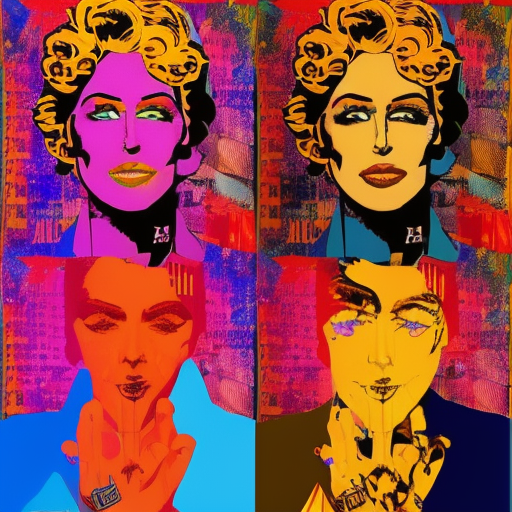Summary: Pop Art is an art movement that emerged in the 1950s and 1960s, characterized by its use of popular culture imagery and techniques. It challenged traditional notions of art by incorporating elements from mass media, advertising, and consumer culture. Pop Art celebrated the everyday and the ordinary, elevating mundane objects and popular icons to the status of art.
Origins and Influences
Pop Art originated in Britain and the United States in the mid-20th century as a reaction against the dominant abstract expressionism movement. Artists sought to move away from the introspective and emotional nature of abstract expressionism and instead focus on the external world. They drew inspiration from the vibrant and commercialized culture of post-war America, including advertising, comic books, and consumer products.
Characteristics and Techniques
Pop Art is characterized by its use of bold colors, flat and graphic imagery, and the appropriation of popular culture icons. Artists often used techniques borrowed from commercial printing, such as silkscreen printing and collage, to create their works. They also incorporated everyday objects and materials into their art, blurring the boundaries between high art and mass culture.
Key Artists
Some of the key figures associated with Pop Art include Andy Warhol, Roy Lichtenstein, and Claes Oldenburg. Andy Warhol is perhaps the most well-known Pop artist, famous for his iconic images of Marilyn Monroe, Campbell’s Soup cans, and Coca-Cola bottles. Roy Lichtenstein is known for his comic book-inspired paintings, featuring bold lines and Ben-Day dots. Claes Oldenburg created large-scale sculptures of everyday objects, such as typewriters and hamburgers, often made from soft materials like vinyl or fabric.
Impact and Legacy
Pop Art had a significant impact on the art world, challenging traditional notions of what could be considered art. It blurred the boundaries between high and low culture and questioned the value and authenticity of art objects. Pop Art also influenced other art movements, such as Neo-Pop, which emerged in the 1980s and continued to explore themes of popular culture and consumerism.
Conclusion
In conclusion, Pop Art emerged in the 1950s and 1960s as a reaction against abstract expressionism, celebrating popular culture and challenging traditional notions of art. It incorporated elements from mass media, advertising, and consumer culture, using bold colors, graphic imagery, and techniques borrowed from commercial printing. Pop Art had a lasting impact on the art world, blurring the boundaries between high and low culture and influencing subsequent art movements.












